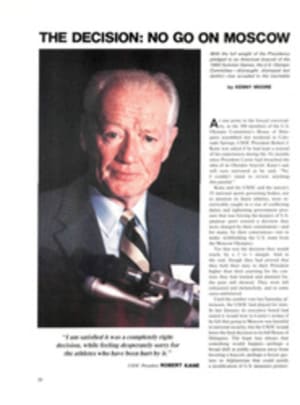
A GEOGRAPHER CHARTS AN ANTIDOTE TO EXCESSES OF COLLEGE RECRUITING
No one who's been keeping up with the latest round of scandals in college athletics is likely to argue with John F. Rooney Jr. He writes, "The recruiting game—its national dimensions, high costs, reliance on people from outside the university community, and pervasive dishonesty—is collegiate sport's most miserable affliction."
Agreed. So what are we going to do about it? Rooney, the author of The Recruiting Came (University of Nebraska Press, $12.95), suggests a radical solution: he wants to "separate the athletic function, the revenue sports, from the traditional form of university control and allow a select group of collegiate football and basketball teams to become second-order, or minor league if you prefer, professional franchises located in the university communities."
His idea is "to eliminate the hypocrisy surrounding the student-athlete myth." That's a laudable goal, but wouldn't the professionaliz of big-time college sports in fact be capitulation to the evils of the current system—an acknowledgement that the colleges are incapable of policing themselves? Wouldn't it be more responsible to beef up the NCAA's tiny, 13-man enforcement staff and put some real muscle behind all its rhetoric about the "student-athlete"?
Those are very important questions for colleges to consider; the virtue of Rooney's book is that it forces the reader to come to grips with them. Though his own proposals are certainly open to dispute, his facts—and Rooney provides a great many of them—are useful indeed.
Rooney is professor of geography at Oklahoma State. In The Recruiting Game he uses his expertise in geography to provide unique, informative maps that show where players come from and where they go. We learn that 44% of California high school football players take their skills to out-of-state colleges, as do 65% of Illinois basketball players. His maps and charts show players crisscrossing the nation in search of places to play—and thereby underscore the truly national scope of the recruiting problem.
There's lots more here: a revealing, depressing diary kept by a college recruiter, a compilation of data on cheating, information about where specific big-time schools find their players, a brief history of recruiting practices. Rooney's prose is something less than scintillating, but he does the job. He gives us the facts.

